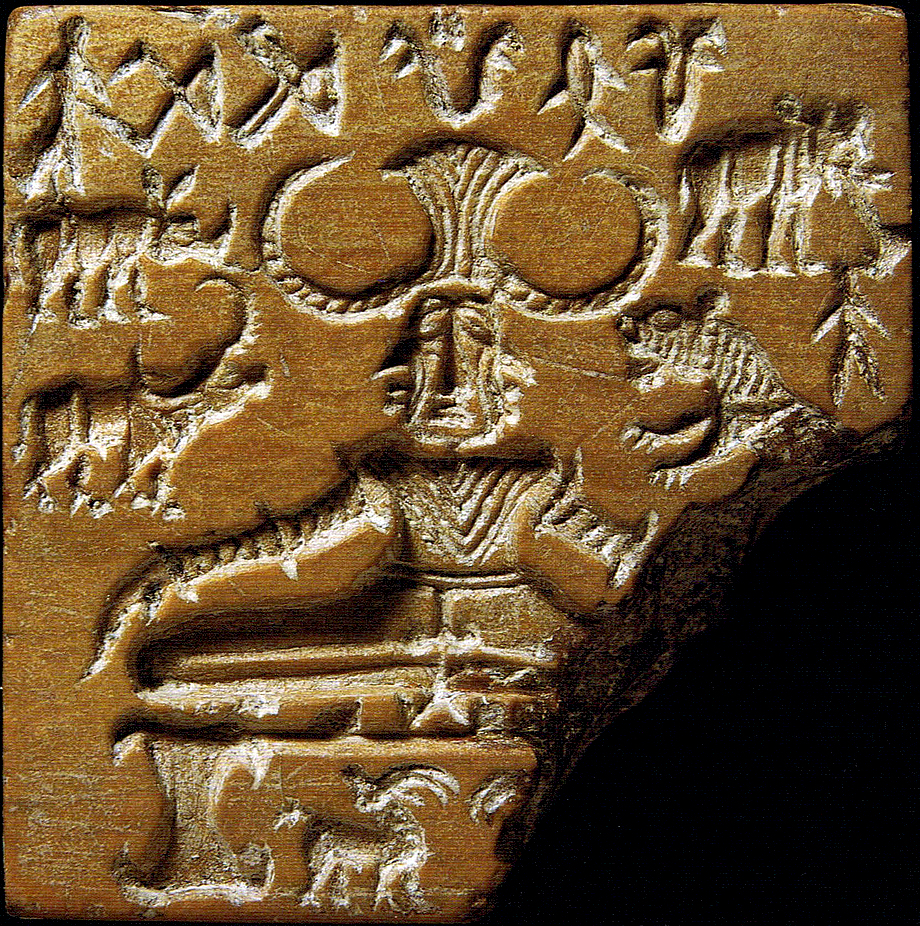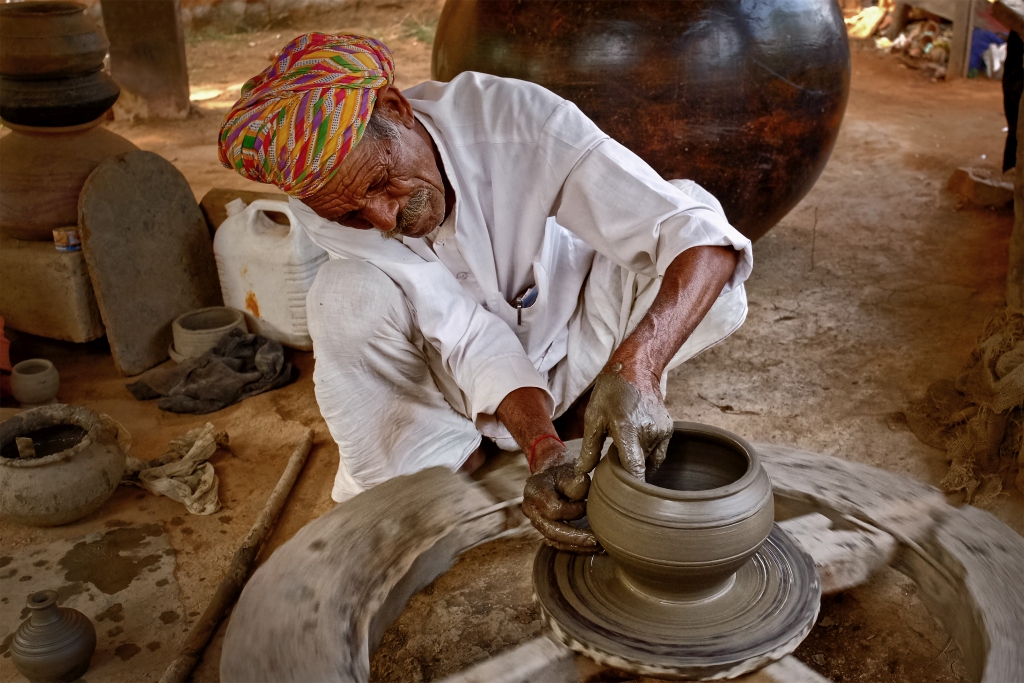Little is known about the Indus belief system. As the Indus script has not been deciphered, religious ideas can only be concluded from pictorial representations. Seals are important sources of these representations.
The so-called Pashupati seal, discovered in Mohenjo-daro in 1928, leaves plenty of room for religious interpretation.

The central figure is sitting on a low platform or throne below a seven-character inscription. The figure is in a meditation-like posture. He wears a horned headdress, and his face is probably covered by a mask. It seems that he has not one, but three faces. Images of different animals can be seen around him: a buffalo, a rhinoceros, an elephant, a tiger, and two antelopes.
This representation reminded the archaeologists of the god Shiva, therefore different names of Shiva were given to the seal: it is regularly referred to as Pashupati or Mahayogi. This seal raises several important questions about the beliefs of the inhabitants of the Indus Civilisation. Does it prove the existence of the figure of Shiva in the 3rd millennium BCE in South Asia? Can the roots of yoga practice be traced back to the 3rd millennium BCE in South Asia?
A képek forrása:
1. kép: https://commons.wikimedia.org/wiki/File:Shiva_Pashupati.jpg

